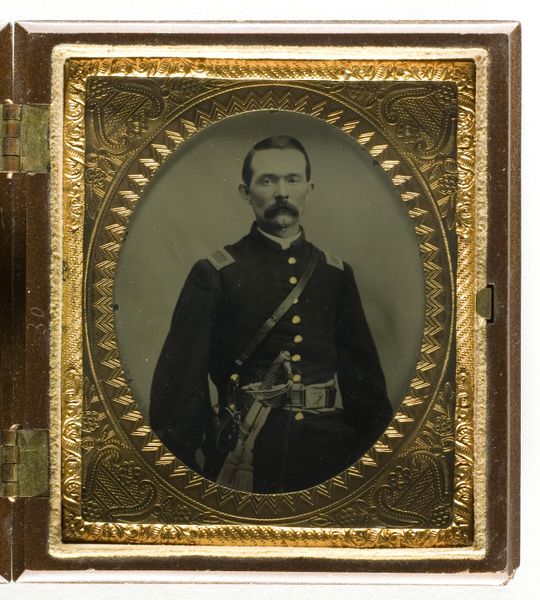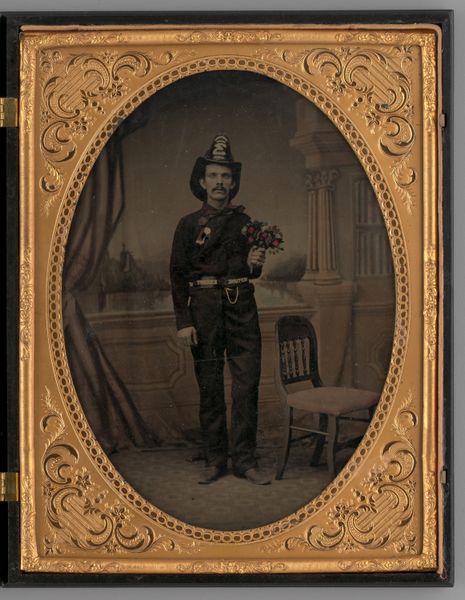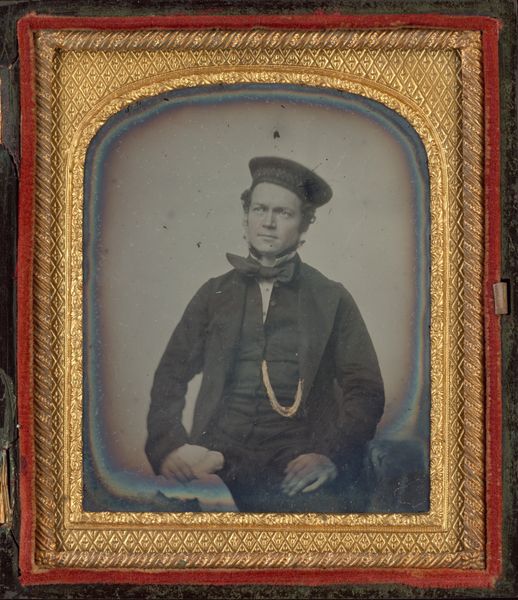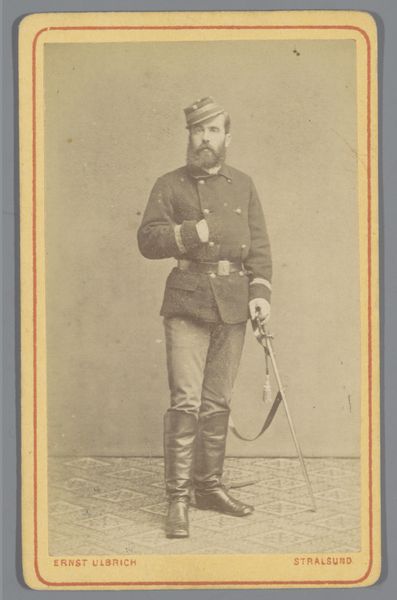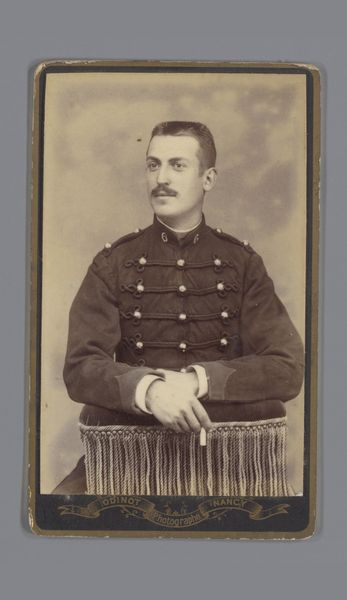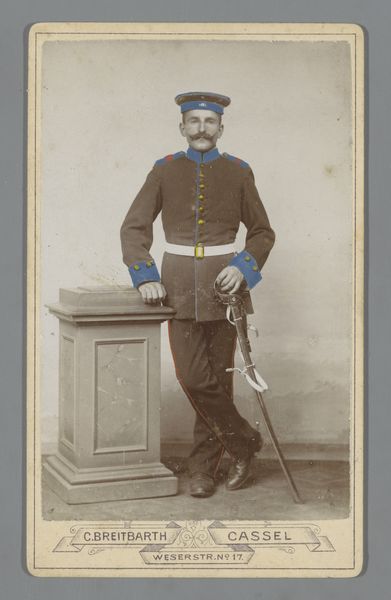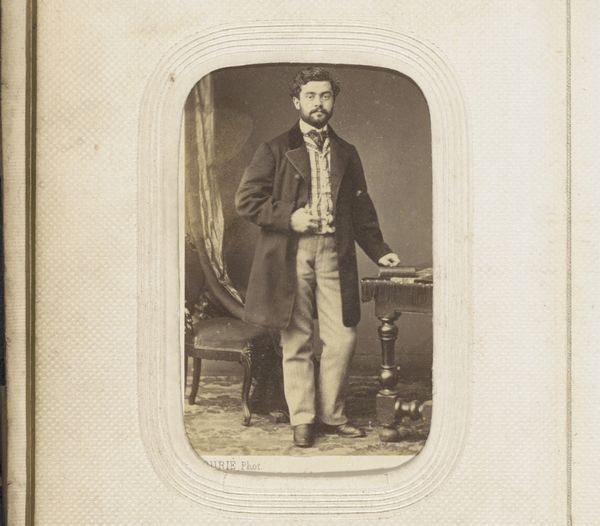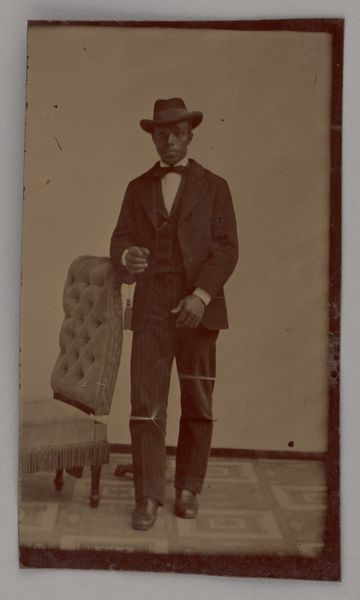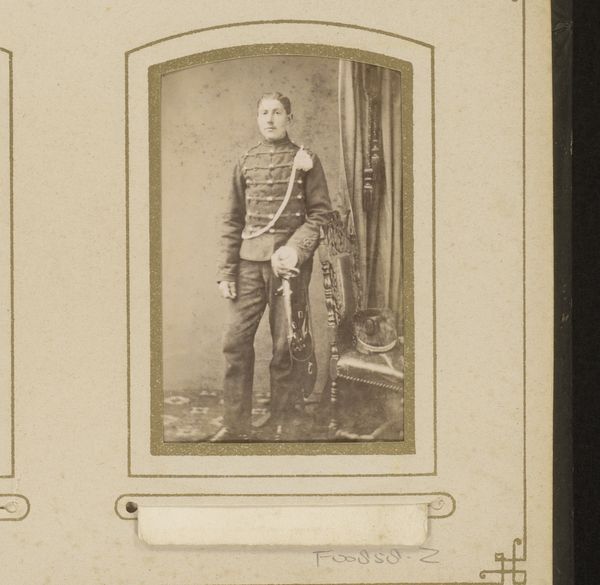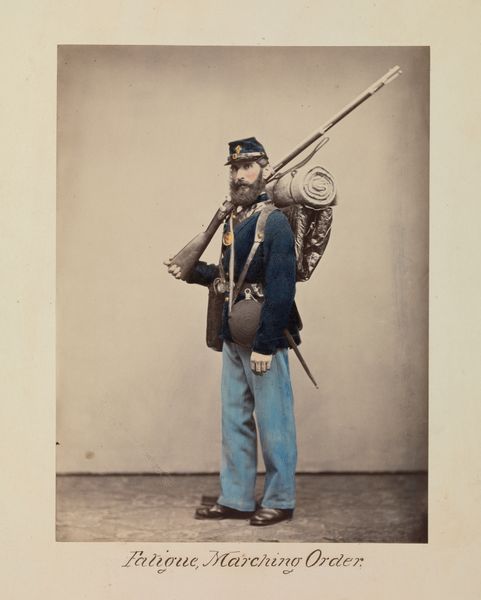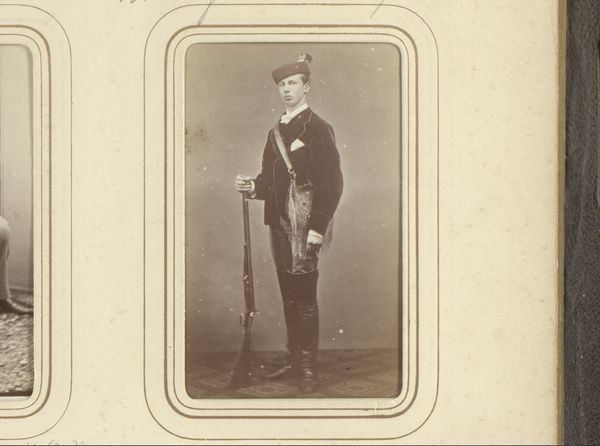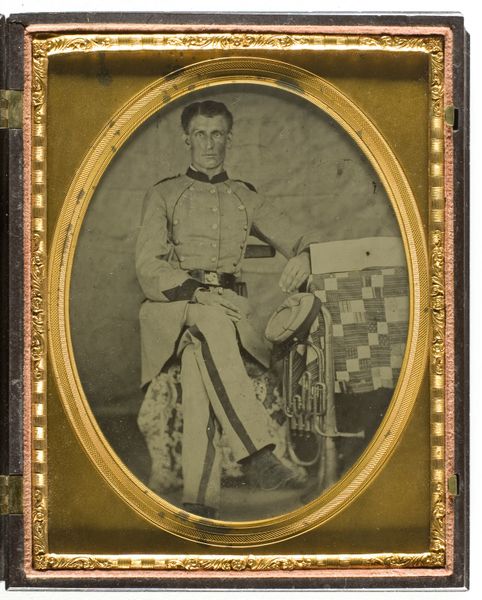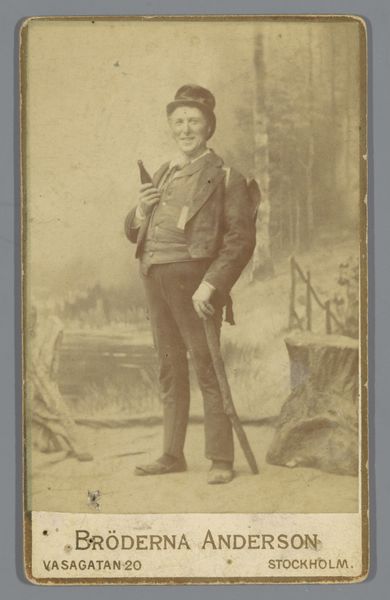
daguerreotype, photography
#
portrait
#
16_19th-century
#
daguerreotype
#
photography
#
geometric
#
19th century
Dimensions: 9.6 × 8.1 cm (plate, appro×.); 8.7 × 6.3 cm (image, sight); 11.6 × 18.5 × .8 cm (open case); 11.6 × 9.3 × 1.6 cm (case)
Copyright: Public Domain
Samuel J. Miller made this ambrotype portrait of a seated man with a sabre sometime in the mid-19th century. The subdued palette and the sitter's direct gaze create an intimate, yet formal atmosphere. The careful arrangement of the subject, with the sabre bisecting the composition diagonally, introduces a dynamic tension, a symbolic rupture within the conventional portrait format. Structurally, the image operates on several levels. The sitter's pose, with legs crossed and sabre in hand, conveys authority and composure, while the diagonal line of the sabre destabilizes this sense of stability. Consider how this contrasts with the rigid symmetry typically favored in formal portraiture of this era. Miller engages with a semiotic interplay of power, subtly questioning established codes of representation. The texture of the ambrotype itself, with its inherent imperfections and tonal variations, adds another layer of complexity. This tactile quality invites us to consider the materiality of the artwork and its engagement with themes of representation and identity.
Comments
No comments
Be the first to comment and join the conversation on the ultimate creative platform.
